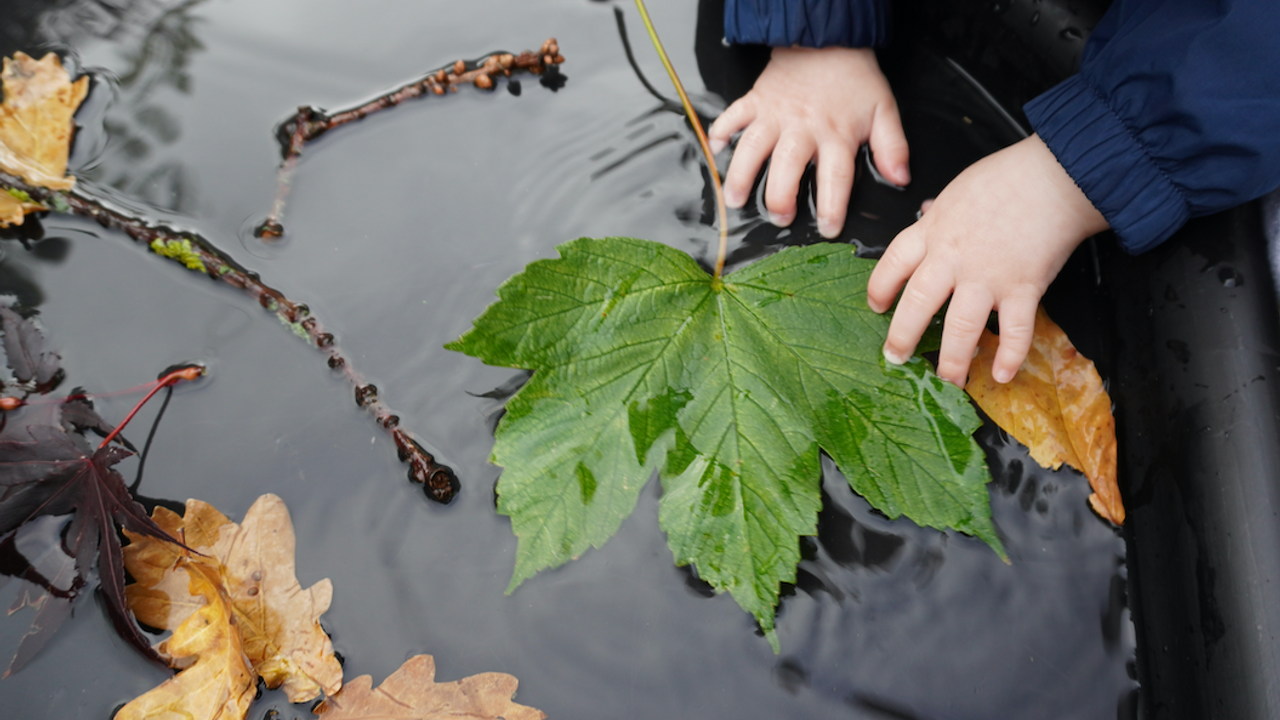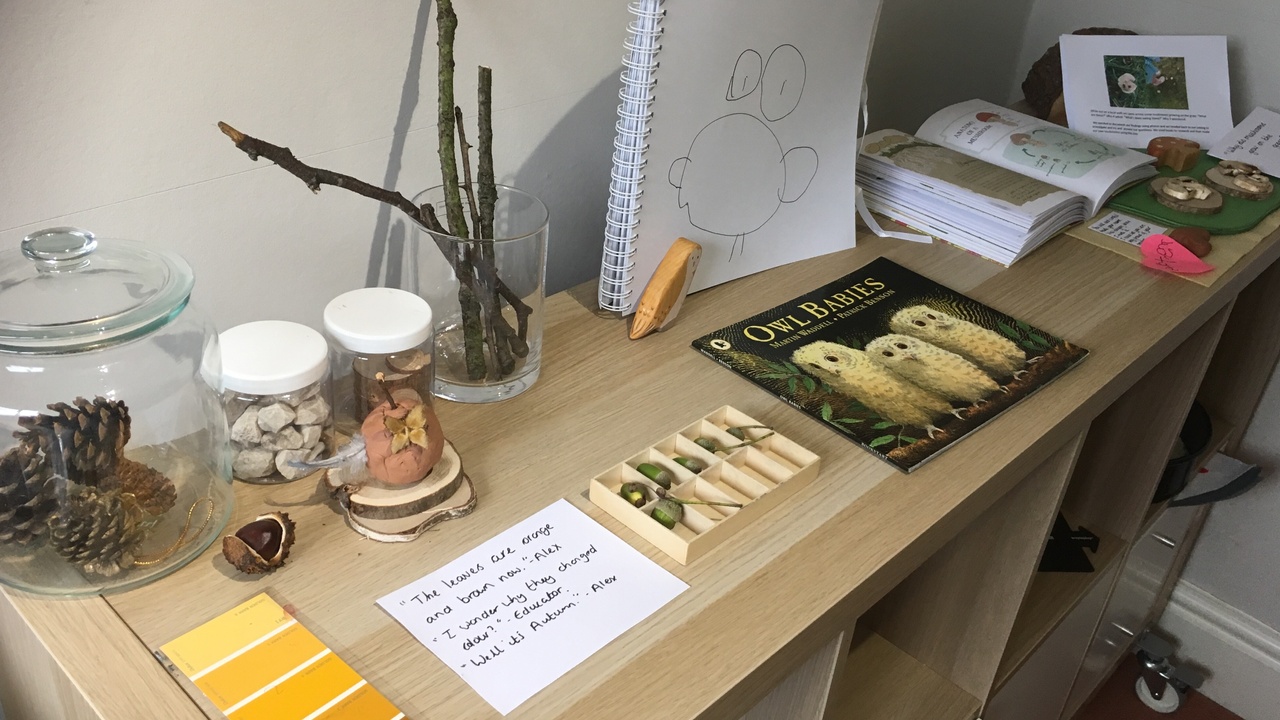Blog
“Strive to make everyday the best day of your life, because there is no good reason not to.” Hal Elrod
Simple Autumn Leaf Play

Autumn time has to be one of my favourite times of the year. Having Oliver now makes it even more exciting too as I take a moment to stand back and watch him experience everything.
We have loved getting outside each day and doing a daily walk. Talking about all the things we notice each day and notice any changes. Doing this is very much inspired by the practice of the Danes with the daily walk children in early education do. We stop at our favourite tree as well to document its changes as we move through the year.
I also think it's important that we as adults take the time to just pause and appreciate the slow moments of joy in the day. We can't teach hygge and living well if we don't model it ourselves. I've built this into our daily walk and we will often find a little spot to just sit and watch what's going on.
On our walk yesterday we took great enjoyment in collecting up some of the fallen leaves and twigs. We then brought these back and I popped them in some water in our tu...
Create an Autumn Nature Shelf

Setting up a seasonal space in your setting gives children the opportunity to connect with nature and deepen their understanding. Helping them also to be more present about the world around them and develop a love for nature.
Where to set up the nature shelf?
The nature shelf doesn't need to take up a huge amount of space in your setting. I have seen it be successfully implemented on a small window sill. It could be on a table, inside an up turned crate, a shelf on the wall or an a shelving unit.
I like to position it in an area that flows between inside and out that offers that natural connection with the outdoors. If you have families visiting the setting too with their children consider where would be a nice space for them to pause and talk about what they can see?
What can I put on my nature shelf?
I like to include a range of open ended materials that young children can connect with. I also invite children and their families to contribute to this when they make an excit...
How To Flourish This Autumn with Hygge in the Early Years

How to flourish this Autumn with Hygge in the Early Years...
As the leaves become crunchy underfoot here are a few simple ways to enjoy Autumn.




For more seasonal ideas see my Re-Wilding your Wanderlust Child Nature Study Programme
Some books to inspire you:







20 Hygge Nature Crafts for Children

Try these Hygge Nature Crafts for Children. Some wonderful nature-based craft ideas to inspire you.
1. Make a stick nest
Add a pine cone bird - pine cone with feather for a tail and wings
2. Clay or playdough Faces
Use homemade playdough or air dry clay to create creatures and faces on the bark of trees.
3. Bark Rubbings
Create bark rubbings or leaf rubbings then use them in your other craft activities - perhaps on your nature bracelet or wand?
4. Flower Pressing
Flower pressing has long been a wonderful nature craft activity. If you don't have a press just use heavy book lined with paper to press your flowers. These can then be used in crafts later in the year - perhaps on a Cosy Hygge Jar with fairy lights inside?
Or, create an air dry clay trinket bowl with your pressed flowers stuck on with a layer of pva on top to protect them.
Or, add them to candles to decorate them.
5. Leaf and Stick Butterflies/dragonflies
A cute nature craft using nature.
6. Hessian R...
5 Simple Lavender Activities

Lavender is a versatile herb with numerous properties beneficial to health, wellness, and everyday life. Its calming aroma, therapeutic benefits, culinary uses, and role in personal care and household products make it a valuable and widely appreciated plant.

Lavender can be grown from seed and is a great sensory ingredient to explore. It attracts pollinators like bees and butterflies, making it a beneficial plant for your garden. Add it to playdough, potions, make lavender perfume or dry it and add sachets to your room indoors to create a beautiful calming scent. Lavender oil has antiseptic and anti-inflammatory properties, making it useful for treating minor burns, insect bites, and skin irritations. You can also use it in cooking and natural cleaning products. Lavender has a calming effect, relaxing you, aiding sleep and reducing stress and anxiety.
How To Make a Nature Journal With Your Children

Encouraging children to get outdoors in nature with a fun activity that will keep them engaged.
Create a nature Journal with your children to help them have a better understanding of nature and to encourage them to ask questions about the nature that surrounds them.
Go on a walk to the park, forest, pond, stream, woodland, beach. Use your journal to make notes and draw what you find most interesting. Write down what you see and hear, stick special leaves and flowers that you find in. Draw around leaves and create leaf and bark rubbings on the pages.
Take some watercolours and crayons to use - what colours can you see? Take this journal with you over the summer holidays to make a record of the adventures you have been on and the nature that you have found. Take it to the beach and draw shells, fish and seabirds. Take it to the pond and sketch the tadpoles, frogs and ducks. Stick any feathers that you find into your journal. Stick in a photo of you collecting natural treasures or j...
Exploring Elderflowers

The beautiful white, frothy elderflowers tend to bloom in late May, turning to
Here are a few activities to explore:
- Make delicious elderflower cordial or gin!
- Add them to cakes or biscuits
- Try them deep-fried to make tasty elderflower fritters
- Make elderflower jam
- Add them to homemade Playdough
- Add them to your mud kitchen and potions
- Paint Elderflowers using a cotton bud to create a spray of white flowers - or splatter the paint to see what effect you get.
Find out more about Hygge in the Early Years here.
10 Ideas for Ladybird Nature Play

Ladybirds are a beloved and valuable part of our natural world. It is lovely to find them in the garden or out and about in parks.
Some interesting facts about Ladybugs:
-
From the beetle family.
-
Common colors include red, yellow, and orange with black spots, but some species can be black with red or yellow spots.
-
There are about 5,000 species of ladybirds worldwide.
-
The seven-spot ladybird is one of the most familiar species in Europe.
-
The bright colors and spots of ladybirds serve as a warning to predators that they are toxic or distasteful.
-
When threatened, ladybirds can secrete a yellowish fluid from their leg joints, which has a foul taste and can deter predators.
-
Ladybirds are essential for natural pest control in gardens and agricultural fields, helping to reduce the need for chemical pesticides.
-
Ladybirds are often considered symbols of good luck and are associated with various folk beliefs and superstitions around the world.
7 Ways to Get Barefoot in Nature Today!

Young children love to be free and take off their clothes. Yet we can be so quick to cover them up, especially their feet! Children in the UK are often given shoes even before they can walk.
Being barefoot is so beneficial and we feel so much of the world through our feet. A study in the journal 'Frontiers in Pediatrics' has shown that children who spend most of their time barefoot have increased motor skills and are better in jumping and balancing.
Many teachers and forest school leaders here in the U.K share their experiences of children lacking in co-ordination and balance when moving around the uneven forest floor.
When we spend time indoors we are greatly limiting the types of surfaces children learn to walk on and get used to moving around on. These are normally smooth and firm with no roughness or bumps.
When we take our shoes and socks off outdoors we are also connecting our bodies directly to nature which benefits our wellbeing too. Helping our mental health and bring...
Should learning be beautiful?

I have heard people say:
'Children don't need beautiful set ups in their play. This has only been created for the adult.'
My personal belief here is that like most things in life we need balance.
We need reflection.
We must go back to the child.
We can create invitations to play that pay great attention to detail because we are responding to an emerging interest and we want to captivate the child's awe and wonder even more. We want them to be excited about the possibilities of deepening this learning or fascination so we present it to them in an open ended and irresistible way.
I also know that amazing learning happens when things are a bit more rustic and even messy! Exploring the patterns the numicon plates leave in the shaving foam, the changes to the clay when it's been left outside in the rain or the cardboard box that's been transformed into Elsa's frozen castle with little more than the imagination.
Children and their learning needs can be neglected when we lose sig
...















